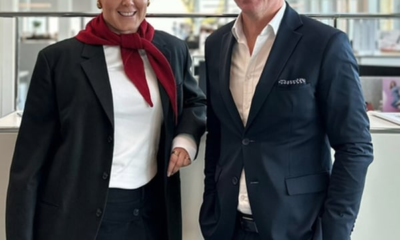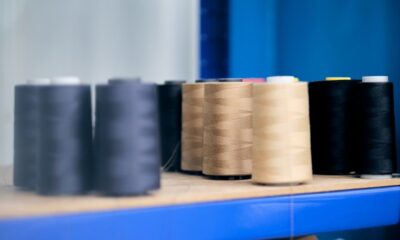Fashion
The 40th Festival de Hyères opened on Thursday, buoyed by palpable enthusiasm
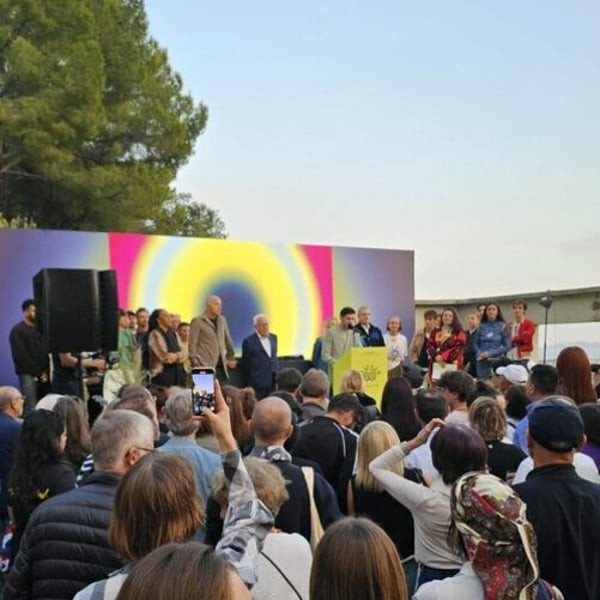
Published
October 17, 2025
The atmosphere on the forecourt of Villa Noailles was effervescent, with a tightly packed crowd delighted to be back together again this year at the Hyères International Festival of Fashion, Photography and Accessories. Yet this must-attend event for fashion and emerging talent had been under threat from a severe budget crisis. In the crowd, there was palpable relief and a determination to do everything possible to make this 40th edition a success.
On the roof of the imposing rationalist building that hosts the event on the heights of Hyères, in the Var, a flag bearing a multicoloured sun flies. The flag was designed by Jean-Charles de Castelbajac, who is on the Fashion competition jury. He stands alongside the other juries and institutional representatives on the new stage set up in the garden for the opening ceremony, set against the backdrop of another large rainbow sun. This new arrangement, a departure from the usual ritual at the villa entrance, gently signals the transition.
“This sun represents what Villa Noailles is all about: dream, creation… It’s the sun that will celebrate this 40th edition,” declared Pascale Mussard, the institution’s president, the first to speak on Thursday evening, thanking “all the people who make the Festival possible”.
The mayor of Hyères, Jean-Pierre Giran, followed suit, thanking, not without a certain emotion, all those present. “There are many of you here, and that’s what matters most, demonstrating your commitment to this project of creativity, modernity and youth,” he told the audience.
“This Festival project is one of a kind, particularly in terms of its reach and longevity,” emphasises Hugo Lucchino, the new general manager of the Villa Noailles art centre, who oversees not only the renowned competition for young designers but also other events such as Design Parade.
Having taken up his post just a few days ago, he pays tribute to his predecessor, Jean-Pierre Blanc, the Festival’s emblematic founder. The mayor and Pascal Morand, executive president of the Fédération de la Haute Couture et de la Mode, also pay tribute.
Before declaring the Festival officially open, Lucchino also thanked, “for their unfailing support,” the partners who have all stepped up at this pivotal moment for Villa Noailles. These include local institutional partners and the French Ministry of Culture, as well as private sponsors such as Chanel, Le 19M, LVMH, Hermès, Supima, Kering, American Vintage and Première Classe, to name but a few.
Support for creativity
“I’m really happy, I feel there’s incredible energy. You can sense that everyone is fully on board. We all want it to continue, because it’s a great festival,” said designer Lutz Huelle, who was on the jury in 2015. “We’re witnessing a kind of ‘reset’. The fact that there’s no jury president this year, but only fashion professionals, is a good idea, because Hyères is, above all, a Festival for young designers and students.”
Mauro Grimaldi, a consultant in the luxury sector who has been attending the event for thirty years, reiterated how important it is to support events of this kind.
“All anyone talks about is money, but it’s crucial to support independent creativity, because the young talent it generates is what feeds the fashion industry. That’s why this is a key edition,” he concluded.
This article is an automatic translation.
Click here to read the original article.
Copyright © 2025 FashionNetwork.com All rights reserved.
Fashion
Global manufacturing momentum weakens in November
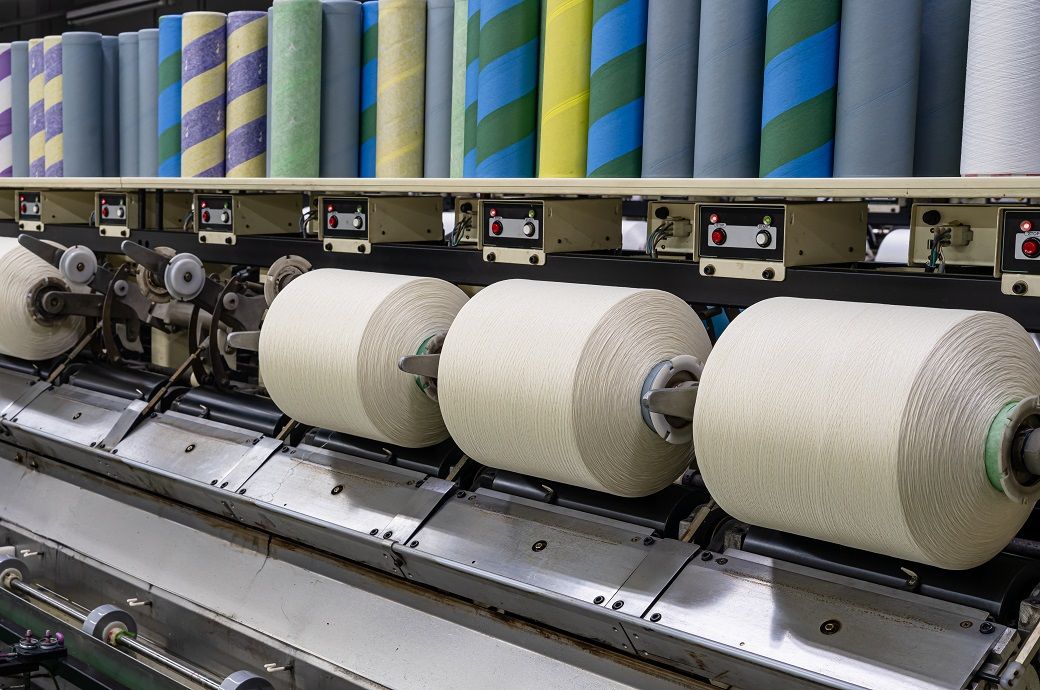
Although three of the five PMI components continued to reflect improving operating conditions, employment and stocks of purchases contracted. Production and new orders rose for the fourth straight month, supported by consumer and intermediate goods, but investment goods saw renewed declines.
Thailand, India, Vietnam, Colombia, Pakistan and the US led global output rankings. The euro area and the UK registered mild growth, Japan contracted, and China saw output stagnate. Export demand remained a drag: global new export orders fell for the eighth consecutive month, though at the slowest pace in the current downturn. Developed markets such as the US, Japan and the euro area saw declines, while emerging markets, including mainland China and India, recorded increases.
Global manufacturing growth softened in November as the PMI slipped to 50.5, reflecting slower gains in output and new orders and a return to job losses.
Consumer and intermediate goods drove expansion, but investment goods weakened.
Export demand continued to contract, while business sentiment improved slightly yet stayed below average.
Inflation pressures persisted, especially in developed markets.
Business confidence edged up to a five-month high but stayed below its long-run average for the twentieth consecutive month. Brazil, Colombia and Thailand were the most optimistic, with the UK and the US also ranking high. The new orders-to-inventory ratio reached an eight-month peak, signalling tentative resilience ahead.
Employment fell for the second time in three months, with job cuts in China, the euro area and the UK offset by gains in the US, Japan and India. Backlogs of work continued to shrink, marking forty-one straight months of decline. Inventory, purchasing activity and input stock indices all pointed to contractions.
Input costs and factory-gate prices rose again, with inflation pressures sharper in developed markets. Supply chains remained strained as average vendor delivery times lengthened for the eighteenth month running.
“The JP Morgan global manufacturing output PMI fell back 0.3-points to 51.2 in November, a level consistent with modest but resilient growth in global industry. In our forward-looking indicators, the future output PMI made a reassuring 1.4-point rebound after dropping in October, though this was tempered somewhat by a fall in the new orders index to a four-month low. By economy, output in the US and India are still expanding at solid rates, whereas the performances in China and the rest of the G-4 remain lacklustre in comparison,” Maia Crook, Global Economist at JP Morgan, said in a release.
Fibre2Fashion News Desk (KD)
Fashion
Chinese group JD.com secures majority stake in holding company MediaWorld–Saturn
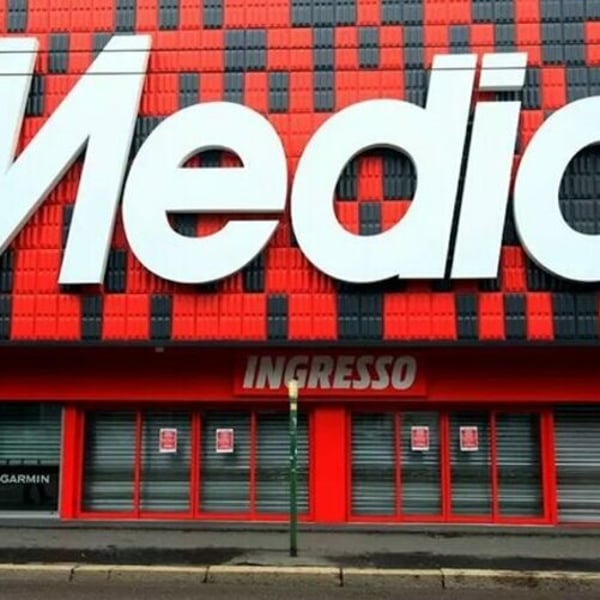
By
Ansa
Published
December 2, 2025
Chinese group JD.com has acquired an 85.2% stake in Germany’s Ceconomy, the holding company that controls the MediaMarkt (MediaWorld in Italy) and Saturn retail chains, in a deal worth €2.2 billion, according to several specialist trade publications.
Around 60% comes from JD.com’s takeover bid, with the remainder resulting from an agreement with Convergenta, the Kellerhals family’s holding company, which will retain a 25.35% stake. The company announced it in a statement.
Germany’s federal antitrust authority gave its approval in September, noting that JD.com had previously been ‘active in Germany only to a very limited extent.’
However, according to Ceconomy, completion of the public tender offer is still subject to approval by the relevant foreign trade authorities and to approval under the EU Foreign Subsidies Regulation. Completion is therefore expected in the first half of 2026.
This article is an automatic translation.
Click here to read the original article.
Copyright © 2025 ANSA. All rights reserved.
Fashion
Wortmann Group’s Tamaris to launch multi-million-euro brand campaign in 2026
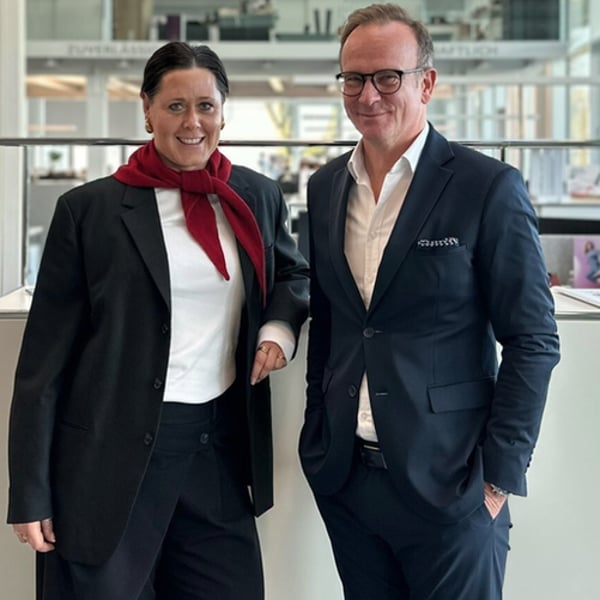
Published
December 2, 2025
With an investment of more than €100 million, Germany’s Wortmann Group plans to launch the biggest brand and retail push in its history next year with its core brand, Tamaris. The nine-figure budget will be channelled primarily into building brand awareness and retail relevance.
CEO Jens Beining and chief marketing officer Cathleen Burghardt are focusing on bringing more people into shops and stimulating demand. The aim is also to sustainably increase retail partners’ sales. At the heart of the push is a clear promise to specialist retailers: better earnings opportunities and stock that moves noticeably faster.
Retailer margins will be improved again for the AW26 season: “Margin is important for the trade- and we are continuously improving it. Equally important, however, is ensuring that stock doesn’t sit on shelves and that sell-through rates in retail rise again,” said Beining. “We create demand that converts in store. We are investing heavily in the brand so that our retail partners continue to achieve above-average success with us.”
The strategic priorities of the push are divided into five programme pillars. The first is to increase sales by optimising the brand experience. The initiative interlinks high-reach campaigns, digital touchpoints, and regional activation to channel attention directly to retail partners’ points of sale. It’s not just about visibility but about genuine added value for partners, such as brand relevance, sparking purchase intent, and increasing sales, emphasises Cathleen Burghardt.
The aim is to build loyalty and bring customers back into shops in 2026. A dedicated loyalty programme that enables personalised communications and relevant offers will support this. One of the stated goals is to increase repeat purchases and noticeably raise return-visit rates to partners’ shops.
Tamaris also aims to tap into new target groups with the men’s footwear sub-brand TMRS Men by Tamaris, among other initiatives. This will complement the existing range, increase sales-area productivity, and create cross-selling opportunities.
Women, the brand’s strong core target group, remain in focus: the extension complements rather than replaces and strengthens Tamaris as a lifestyle brand, says Cathleen Burghardt. The targeted strengthening of the European core markets and the expansion of global presence in the coming years should also increase international appeal and desirability at the point of sale (POS).
High-impact brand moments such as the recently announced partnership with Helene Fischer will act as traffic drivers. Tamaris is thus consistently relying on the power of a strong brand as a motor for retail and is creating long-term support from which partners are expected to benefit directly in their day-to-day business.
This article is an automatic translation.
Click here to read the original article.
Copyright © 2025 FashionNetwork.com All rights reserved.
-

 Sports1 week ago
Sports1 week agoWATCH: Ronaldo scores spectacular bicycle kick
-

 Entertainment1 week ago
Entertainment1 week agoWelcome to Derry’ episode 5 delivers shocking twist
-

 Politics1 week ago
Politics1 week agoWashington and Kyiv Stress Any Peace Deal Must Fully Respect Ukraine’s Sovereignty
-

 Business1 week ago
Business1 week agoKey economic data and trends that will shape Rachel Reeves’ Budget
-

 Tech2 days ago
Tech2 days agoGet Your Steps In From Your Home Office With This Walking Pad—On Sale This Week
-

 Politics1 week ago
Politics1 week ago53,000 Sikhs vote in Ottawa Khalistan Referendum amid Carney-Modi trade talks scrutiny
-

 Tech1 week ago
Tech1 week agoWake Up—the Best Black Friday Mattress Sales Are Here
-

 Entertainment2 days ago
Entertainment2 days agoSadie Sink talks about the future of Max in ‘Stranger Things’




